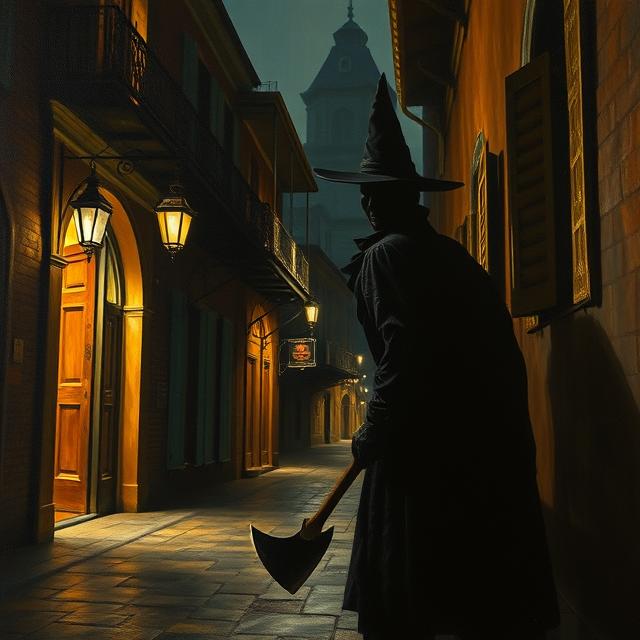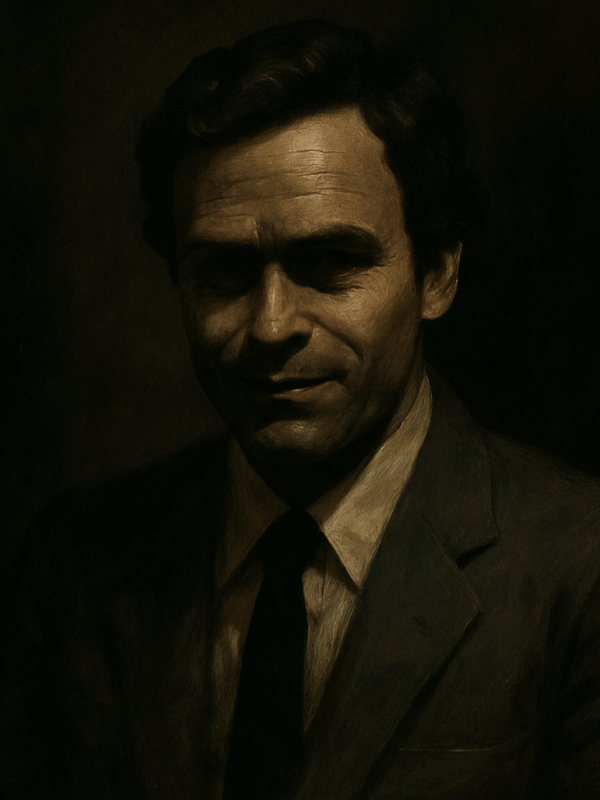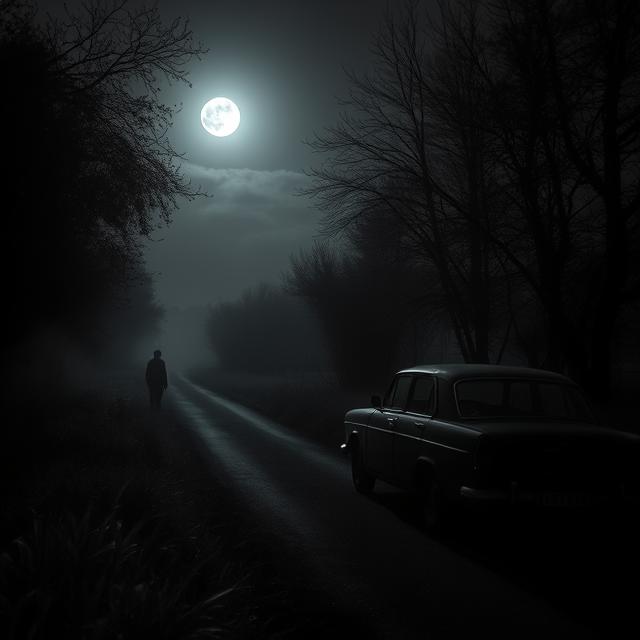The vibrant and culturally rich city of New Orleans, known for its jazz music, Creole cuisine, and historic charm, was gripped by a wave of terror in the years 1918 and 1919. A mysterious assailant, known only as the Axeman, stalked the night, breaking into homes and brutally attacking sleeping residents with an axe. The randomness of the targets, the savagery of the crimes, and the lack of a clear motive baffled the police and terrified the populace. Adding to the enigma was a bizarre letter, purportedly from the Axeman himself, threatening further attacks but offering a strange reprieve to anyone playing jazz music in their homes on a specific night. The story of the Axeman of New Orleans remains one of the most perplexing and unsettling unsolved serial killer cases in American history, a dark melody echoing through the city’s colorful past.
The Axeman’s reign of terror began on the night of May 23, 1918, when Joseph Maggio and Catherine Maggio, an Italian grocery store owner and his wife, were found brutally murdered in their home. Their heads had been severely fractured by an axe, which was found at the scene. The lack of forced entry suggested the killer may have known the victims or that the door was unlocked. The crime was savage and seemingly without motive, leaving investigators with few leads.
Just a month later, on June 27, 1918, Louis Besumer and Anna Schneider, another couple, were attacked in their grocery store and home. Besumer survived with severe head injuries, but Schneider succumbed to her wounds the following day. Again, an axe was the weapon of choice, and there was no apparent motive for robbery. The similarities to the Maggio murders were chilling, suggesting a pattern was emerging.
Over the next year, several more attacks occurred, each bearing the same gruesome hallmarks: victims bludgeoned with an axe in their homes, often with no signs of forced entry or robbery. The victims varied in age and background, further confounding investigators. The list of those attacked includes:
- Joseph Romano (attacked August 5, 1918, survived)
- The Cortimiglia family – Charles, Rosie, and their infant daughter Mary (attacked March 10, 1919; Rosie and Mary survived, Charles died)
- Steve Boca (attacked August 10, 1919, survived)
- Margaret Lo Bianco (attacked September 3, 1919, survived)
The city of New Orleans was in the grip of fear. People barricaded their doors and windows, and the police were under immense pressure to catch the elusive killer. The lack of a discernible pattern in the victims made it impossible to predict who might be targeted next, adding to the pervasive sense of dread.
Then, on March 13, 1919, a letter bearing the chilling signature “The Axeman” was published in the New Orleans Times-Picayune. This bizarre communication added a surreal and unforgettable element to the case. In the letter, the Axeman claimed to be a demon from hell, not of human form. He threatened to unleash another wave of terror on the city on the night of March 19th, but offered a strange condition for reprieve:
“They have never caught me and they never will. They have never seen me, for I am invisible, even as the ether that surrounds your earth. I am not a human being, but a spirit and a demon from the hottest hell. I am what you Orleanians and your foolish police call the Axeman.
When I get out again, I shall not call on such poor mortals as your present victims. No, I am going to visit the more wealthy people now. I think I shall pay a visit to your city on Tuesday night next. But here is a proposition for you people. I am very fond of jazz music and I swear by all the devils in the nether regions that every person will be spared in whose home a jazz band is in full swing at the time I have just mentioned. If everyone has a jazz band going, well, then, so much the better for you people. One thing is certain and that is that some of your people who do not jazz it out on Tuesday night (if there be any) will get the axe.”
The letter, both boastful and bizarre, sent a wave of panic and an unexpected surge of jazz music throughout New Orleans on the night of March 19th. Dance halls were packed, and families held impromptu jazz parties in their homes, hoping to appease the supernatural killer. Whether by coincidence or by the Axeman’s word, no murders occurred that night.
The Axeman’s reign of terror did not end entirely after the letter, but the frequency of attacks did decrease. The final suspected attack occurred in October 1919, when Mike Pepitone was murdered in a similar fashion. After this, the Axeman seemingly vanished as mysteriously as he had appeared.
The identity of the Axeman of New Orleans remains one of the great unsolved mysteries of the 20th century. Over the years, numerous suspects have been proposed, but none have ever been definitively linked to the crimes. Some of the more prominent theories include:
- Joseph Momfre: This theory gained traction later in the 20th century, based on a purported confession by a man named Henry Palaje, who claimed Momfre, a Mafia figure, had committed the murders. However, the evidence supporting this theory is largely circumstantial and contested.
- William Craine: A mentally ill man with a history of violence, Craine was considered a suspect at the time of the murders. He was known to have used an axe in previous attacks, but no conclusive evidence linked him directly to the Axeman killings.
- Theories involving multiple individuals or a copycat: Given the inconsistencies in the victims and the long periods between some attacks, some researchers have suggested that more than one person might have been responsible, or that a copycat may have been at work.
The Axeman’s letter, with its supernatural claims and jazz ultimatum, adds a unique and unsettling dimension to the case. Was the killer genuinely delusional and believed himself to be a demon? Or was this an elaborate psychological tactic designed to instill fear and confusion? The connection to jazz music remains particularly strange. New Orleans was the birthplace of jazz, and the music permeated the city’s culture. Was the Axeman a fan of jazz, or was this a bizarre way to exert control and observe the city’s reaction to his threat?
The lack of forced entry in many of the cases suggests the Axeman may have known some of his victims or that he was adept at gaining entry without leaving a trace. The randomness of the targets, however, makes a personal connection to all of them seem unlikely.
The Axeman of New Orleans remains a haunting figure in American folklore and true crime. His brutal crimes, coupled with the bizarre letter and the enduring mystery of his identity, have cemented his place in the dark history of serial killers. The echoes of his axe and the strange strains of jazz intertwine in the memory of a city once gripped by an unseen terror. The phantom of New Orleans continues to fascinate and disturb, a testament to the unsolved darkness that can lurk within the heart of even the most vibrant communities.
Want to explore the shadows even deeper? For more chilling cases like this, visit SinisterArchive.com, where the legends are real.




